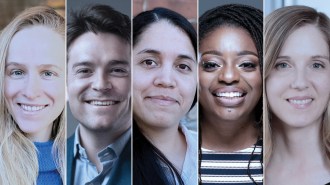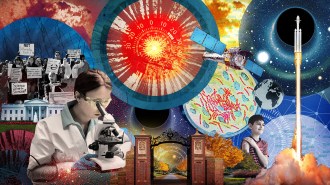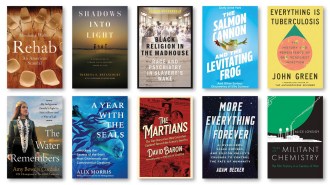Become a guinea pig
Because society at large benefits from biomedical research, we should all accept it as our “moral duty to participate” in research trials, argues a commentary in yesterday’s Journal of the American Medical Association.
The authors, who work at the National Institutes of Health’s clinical center, acknowledge at the outset that theirs is not the prevailing view. Although most people believe that participating in a research trial constitutes a “public good,” they also see nothing inherently wrong in turning down an opportunity to help advance medicine, write Alan Wertheimer and his colleagues. Currently, the majority of Americans step up to the plate only when it feels right or when we see some likelihood of obtaining direct gain from participation.
“According to the standard view, participation in research is akin to giving blood or donating to charity,” the scientists say. But Wertheimer and his coauthors are stumping to reshape our charitableness on the basis of two issues that are sort of joined at the hip: morality and civic duty.
As regards the first point, they argue that whenever we can take act to avoid something bad or provide a common good, individuals should consider themselves as being obligated to do so.
Past legions of human guinea pigs have helped medicine wipe out smallpox, virtually eradicate polio, develop antibiotics and life-saving diagnostic procedures, and improve surgical techniques. By participating in future trials, a new generation of guinea pigs can help medicine identify and refine important therapeutic and diagnostic advances. And because safety trials often require participants without disease, the duty to volunteer for guinea pigism “applies to both healthy volunteers and patients,” Wertheimer’s team argues.
Volunteering to take part in clinical trials is a duty whose importance should be viewed on a par with voting, they say. Toward this end, the NIH researchers argue that recruiting ads should stop referring to participants as “everyday heroes,” because this implies that volunteering requires action above and beyond what should be expected of us. Rather, recruiting programs should implore people to do their part, like World War II era campaigns for recycling, rationing and folding bandages.
So how much must a moral individual volunteer for? Our obligation to become medical guinea pigs “is not absolute,” the JAMA commenters say. ”In other words, there may be circumstances or reasons that override or mitigate the force of the duty” — such as not having to risk one’s job to get to and through each segment of a trial, not having to violate sincere religious beliefs about “bodily integrity,” and not having to jeopardize other important responsibilities, such as caring for children or ailing family members.
And guinea pigs should realize that their participation may have costs. I took part in a two-month-long, thrice-weekly migraine trial investigating the role of acupuncture. For six of those weeks, I left each session experiencing acute pain in my arms that lasted up to two hours. Although I reported the continuing and unexpected discomfort — and was offered the opportunity to drop out — I stuck with it. Because I thought the data might contribute to one-day beating this neurological scourge that has plagued me for more than three decades.
NIH’s clinical center maintains a special website for recruits. But it, together with other biomedical research centers, together suffer from a deficit of human guinea pigs — by one count, a shortfall of some 16 million a year in the United States alone. Wertheimer, Ezekiel Emanuel and G. Owen Schaefer cite one published estimate that five percent of cancer patients now participate in clinical trials. If that number doubled, they say, the usual clinical trial “completion rate would decrease from around four years to one year.” Meaning speedier ascertainment of what works — and doesn’t.
That sounds like one low-cost way we might all help in bringing down the nation’s spiraling out-of-control healthcare costs.







